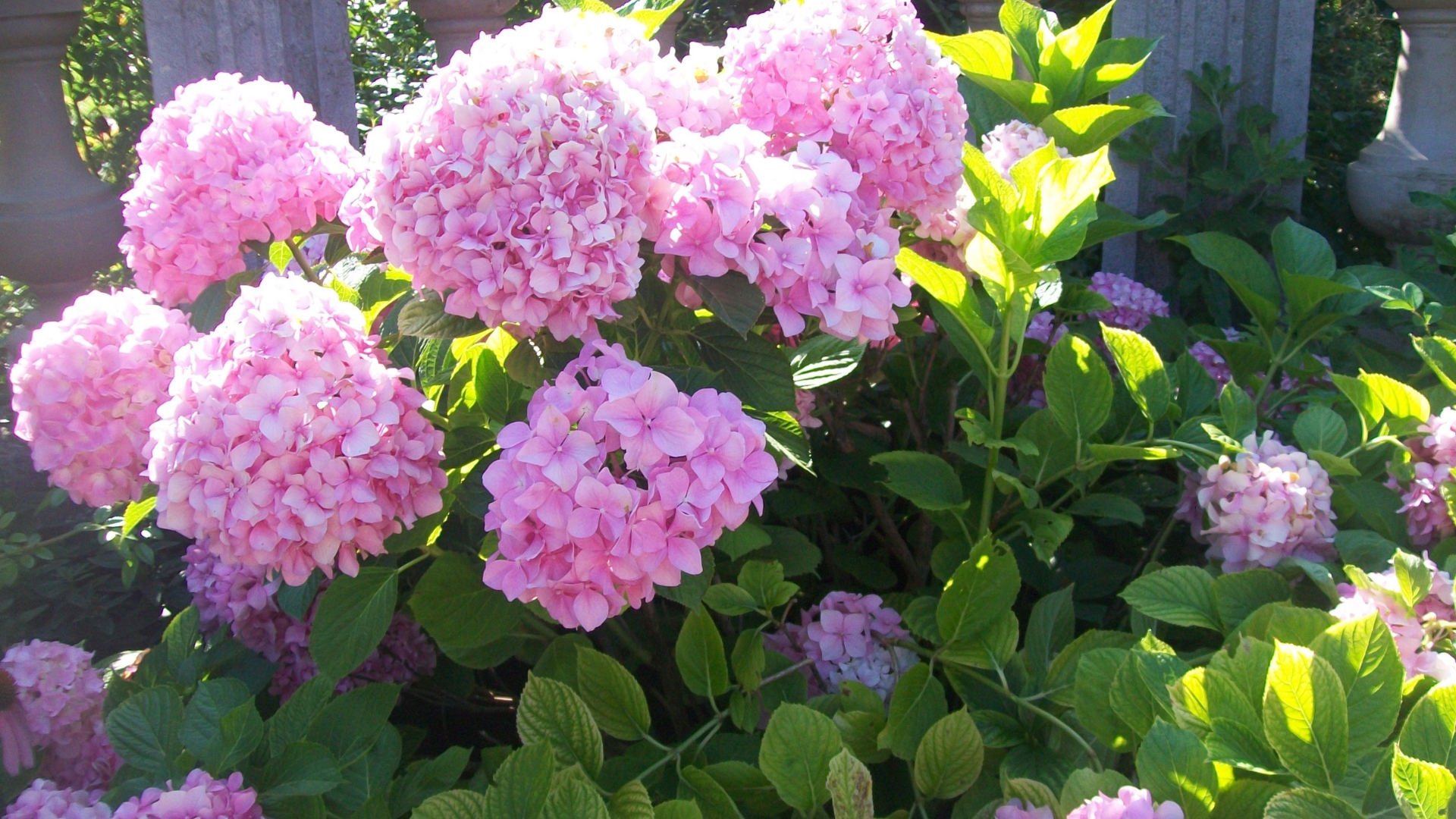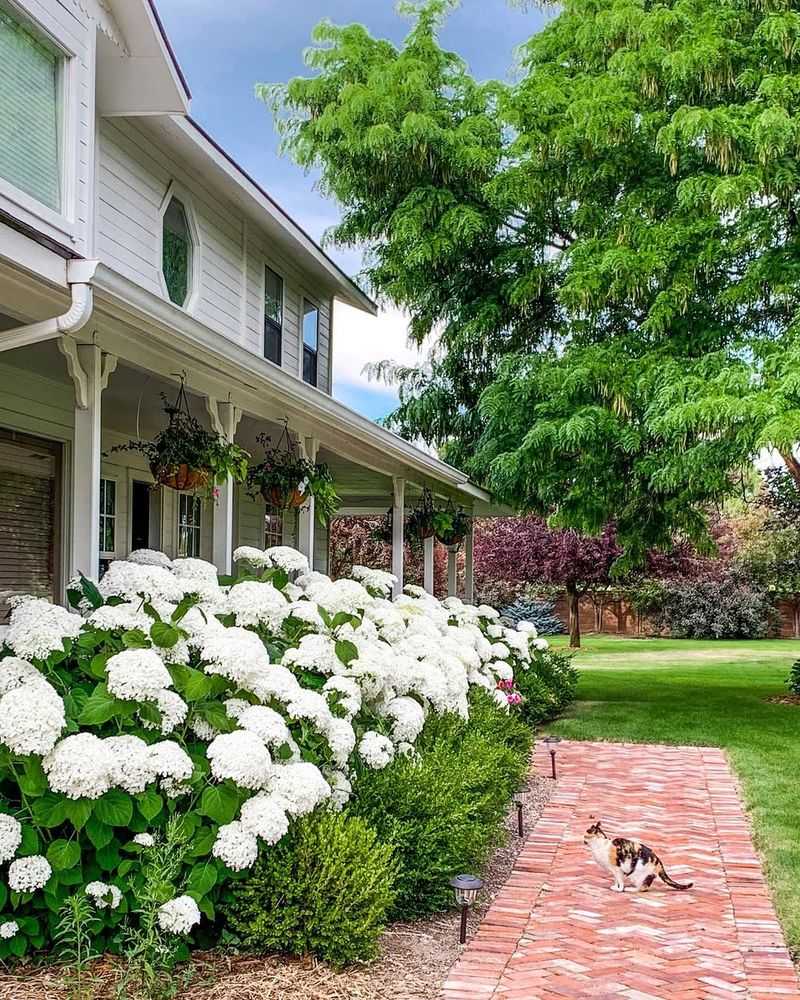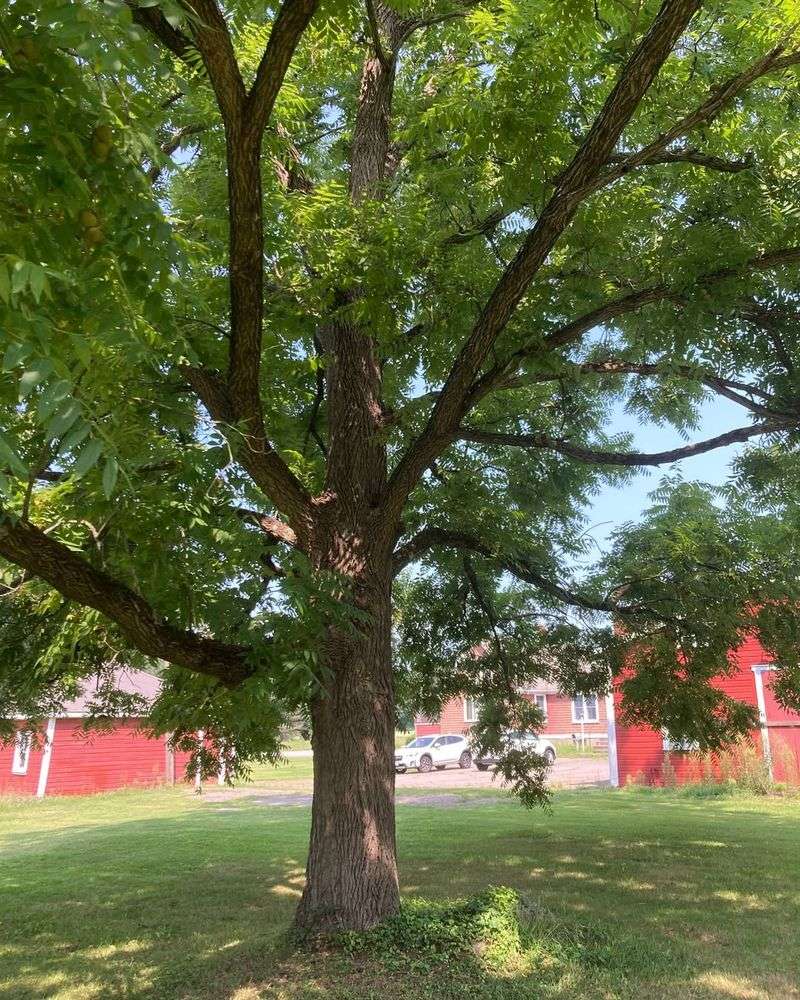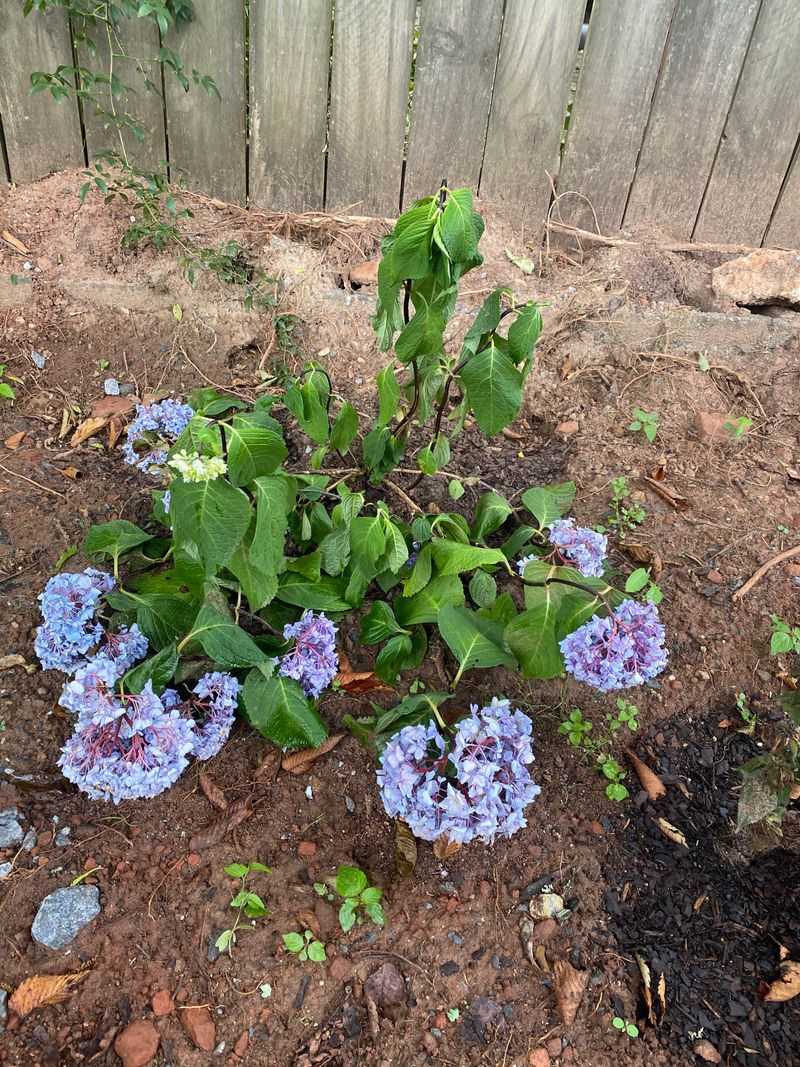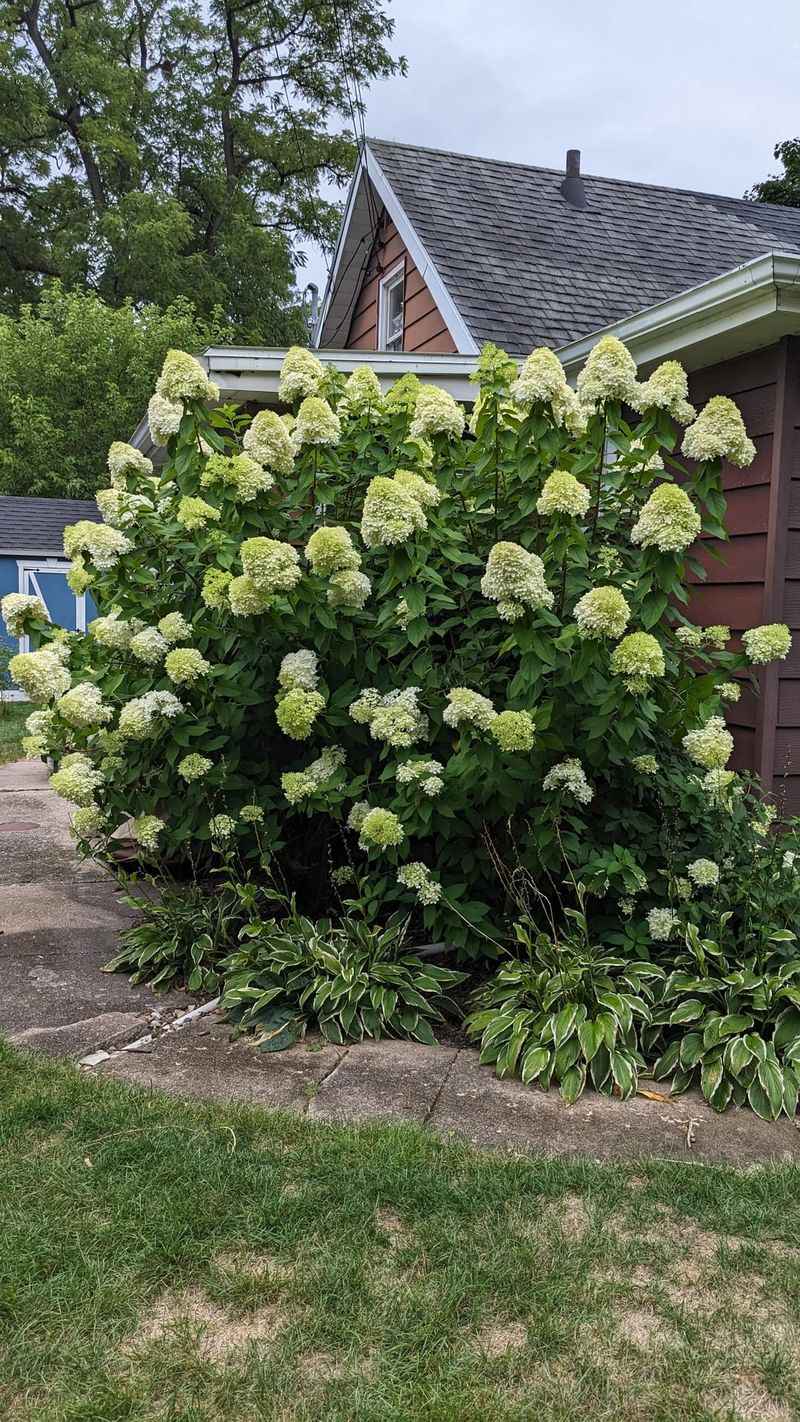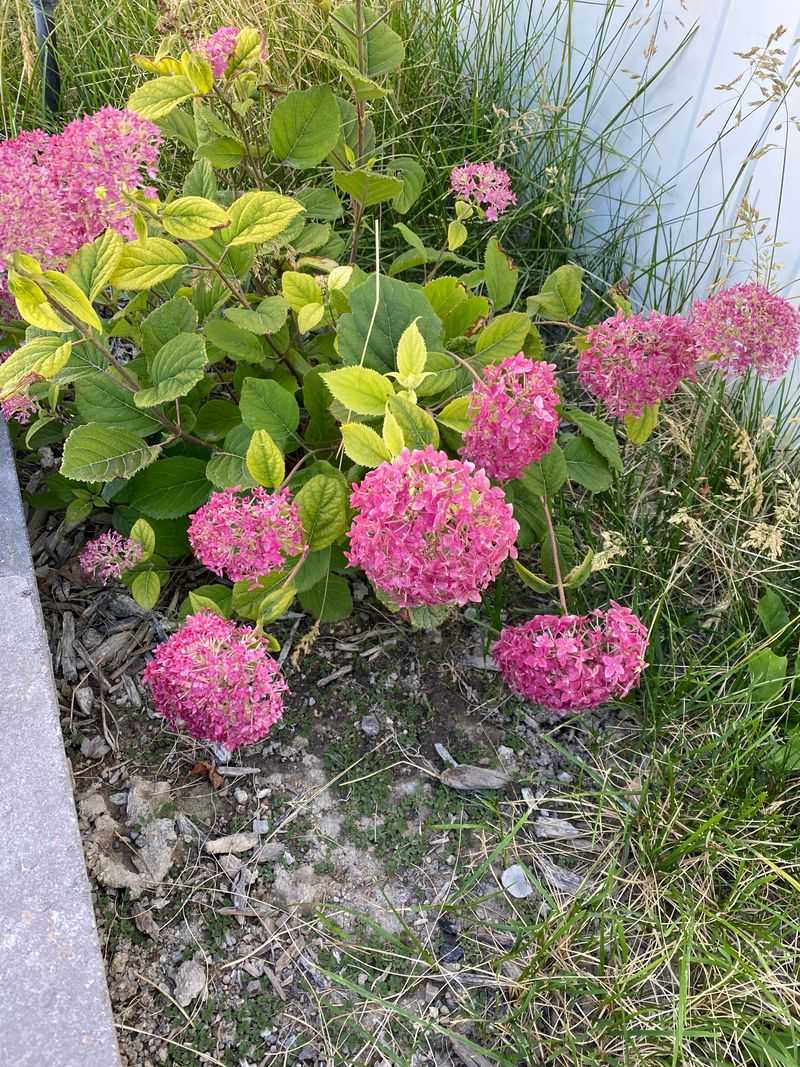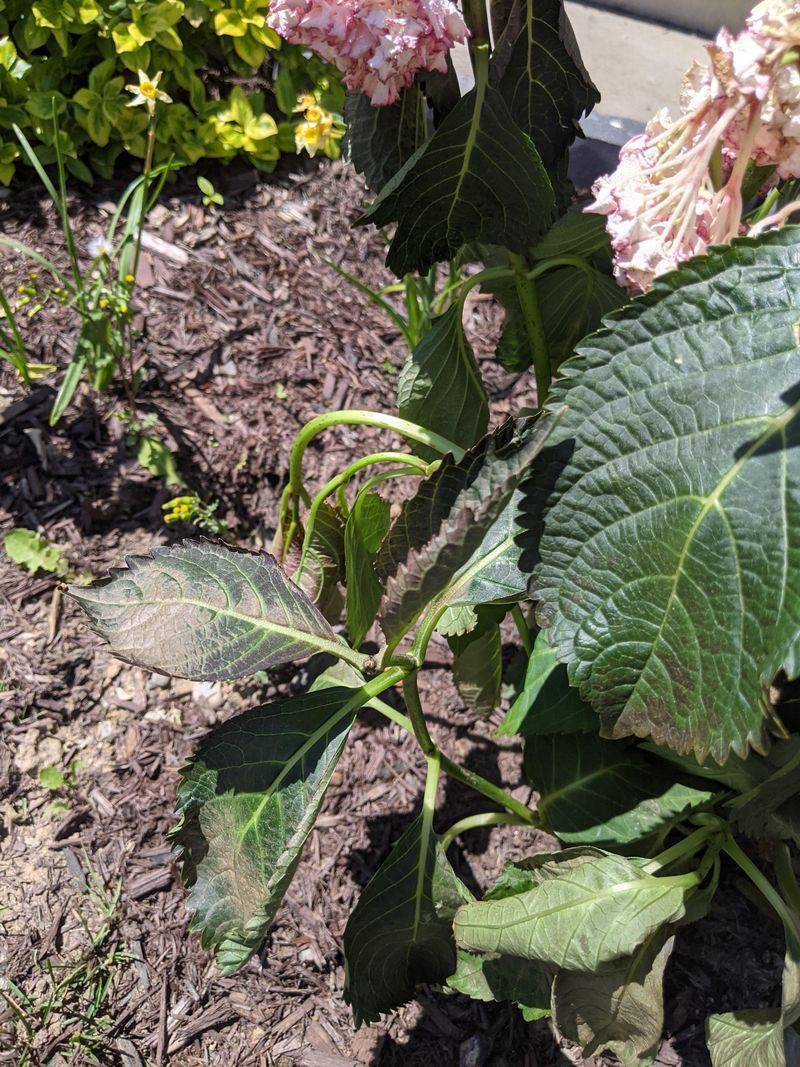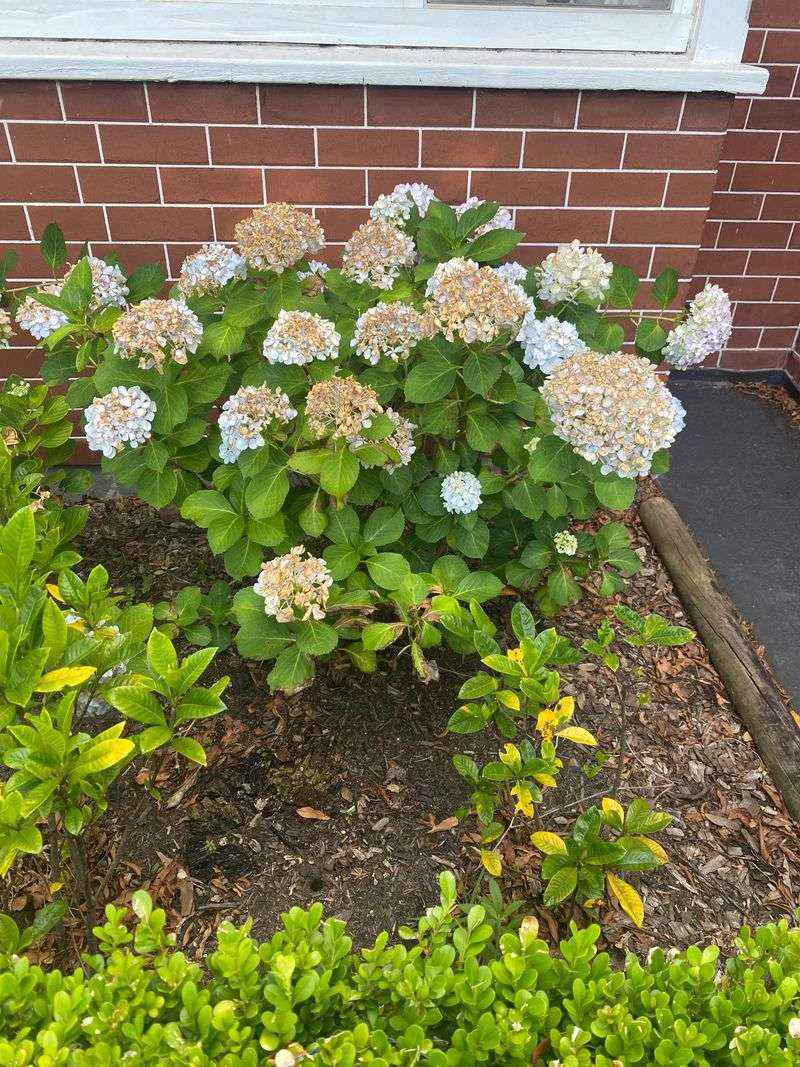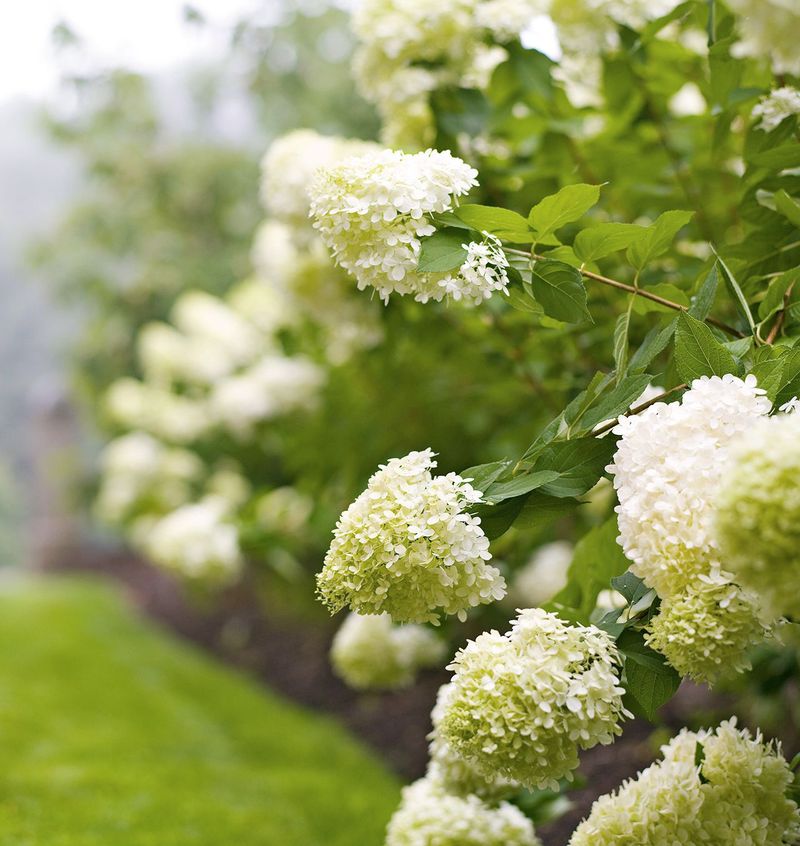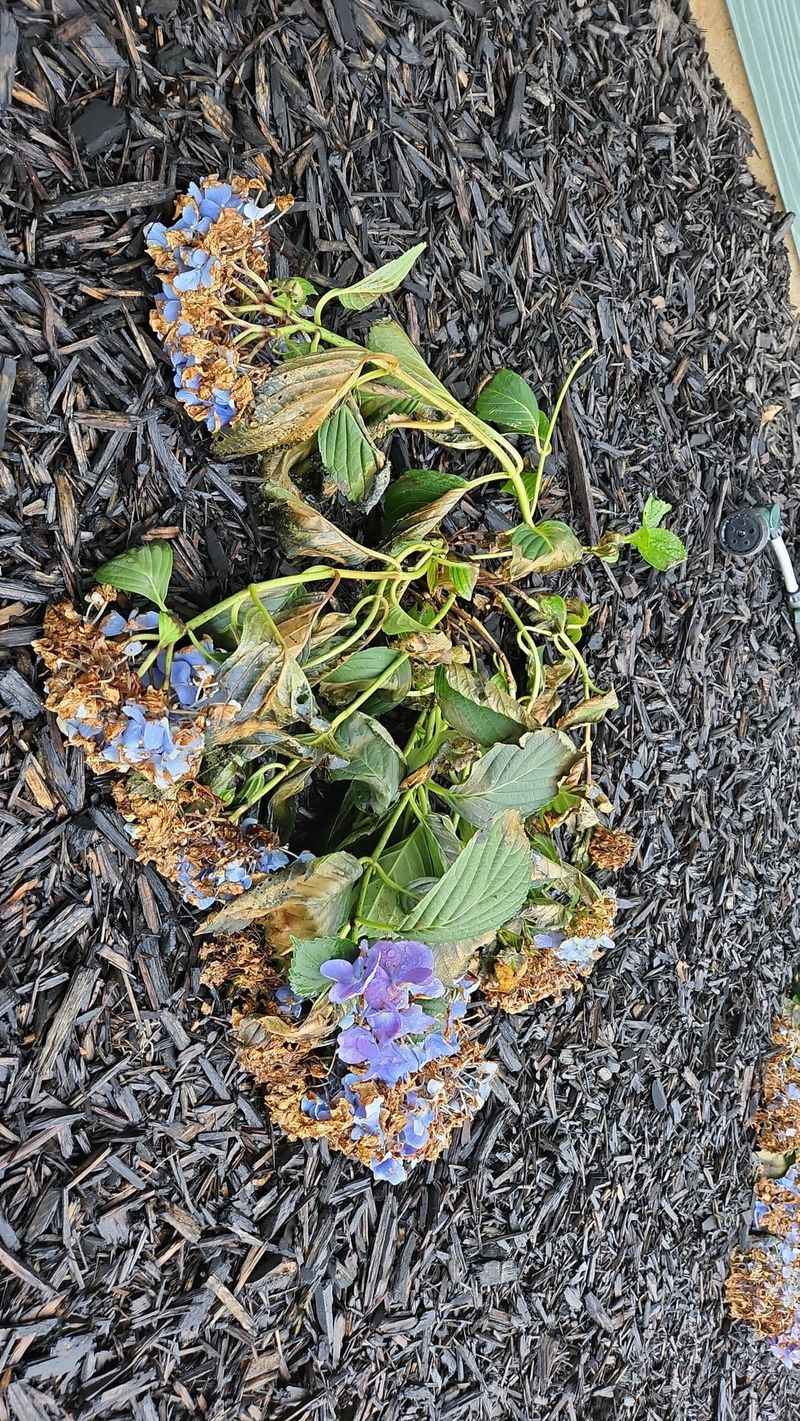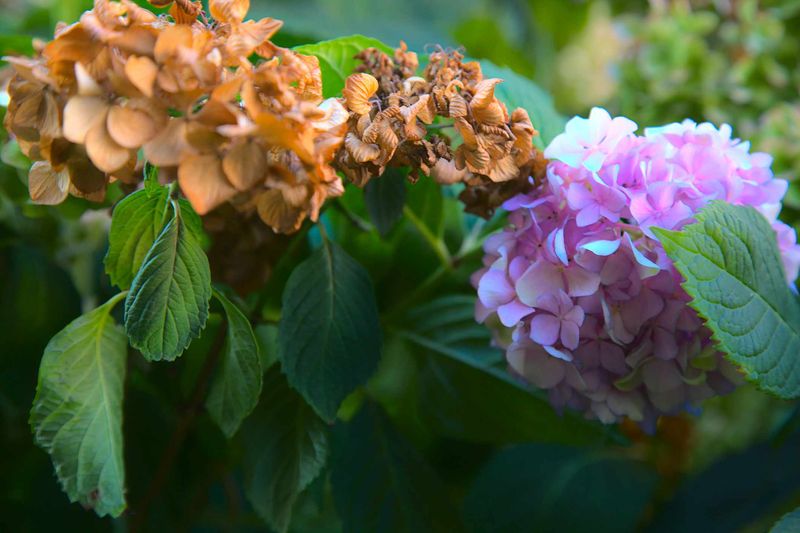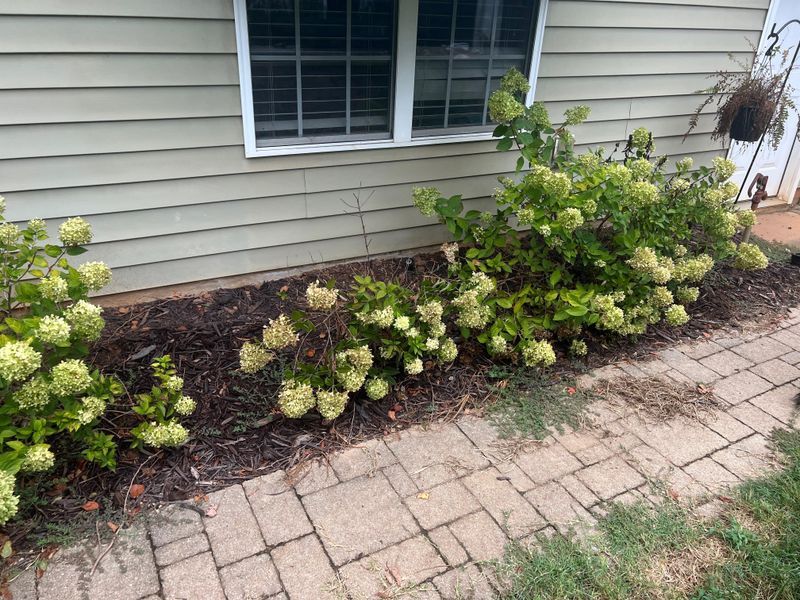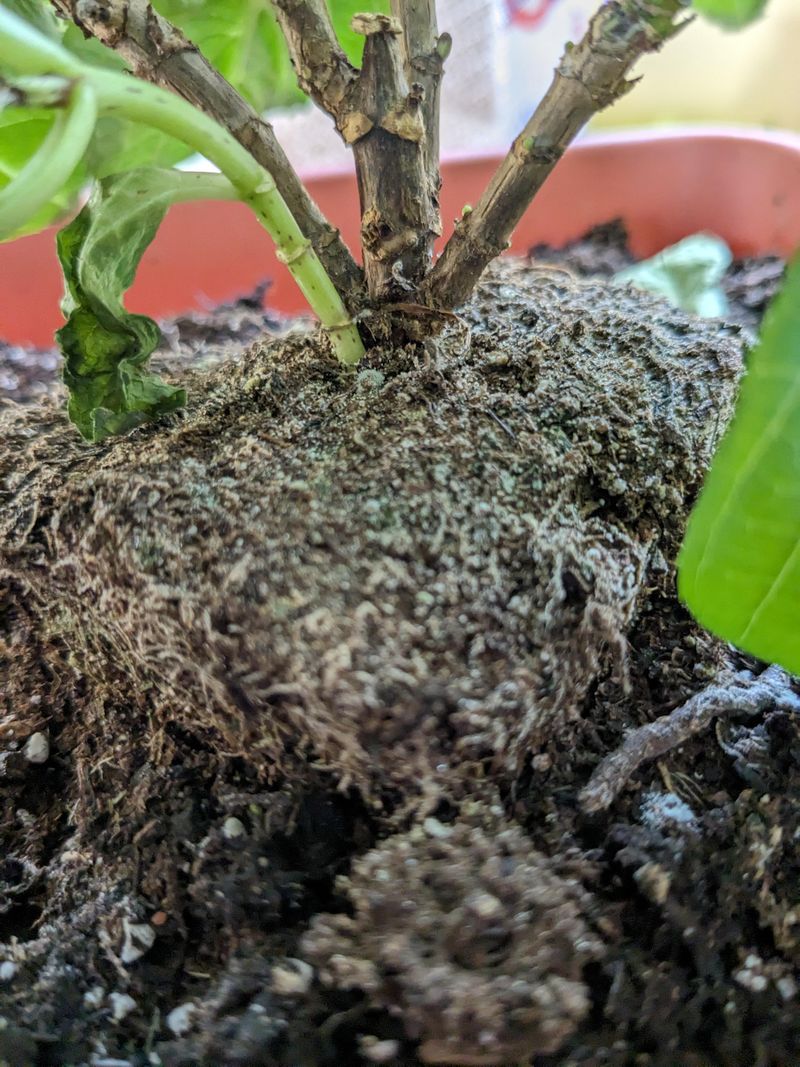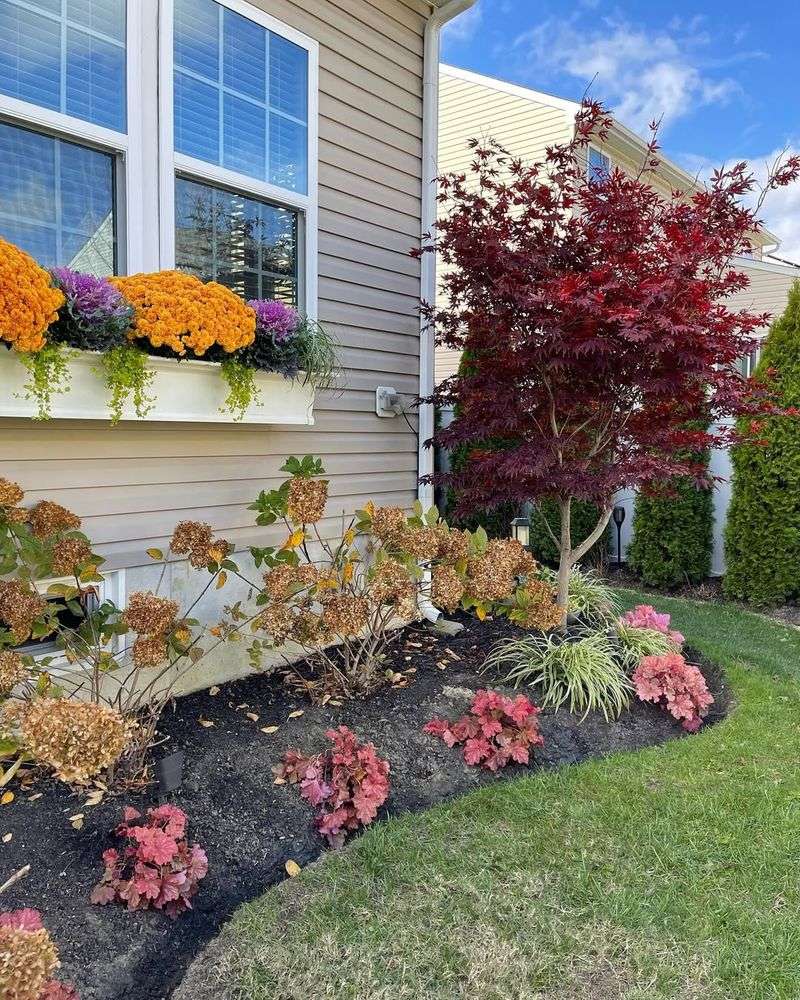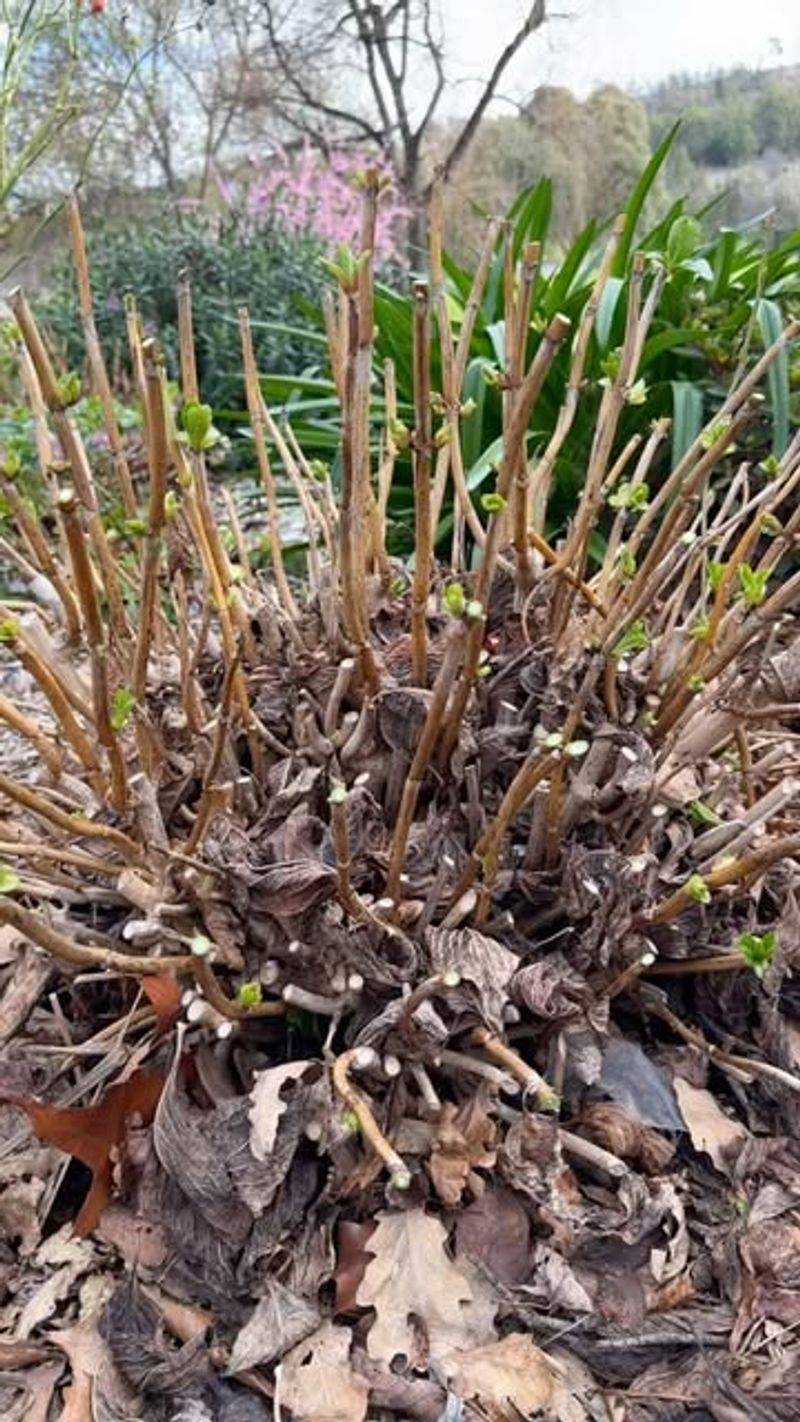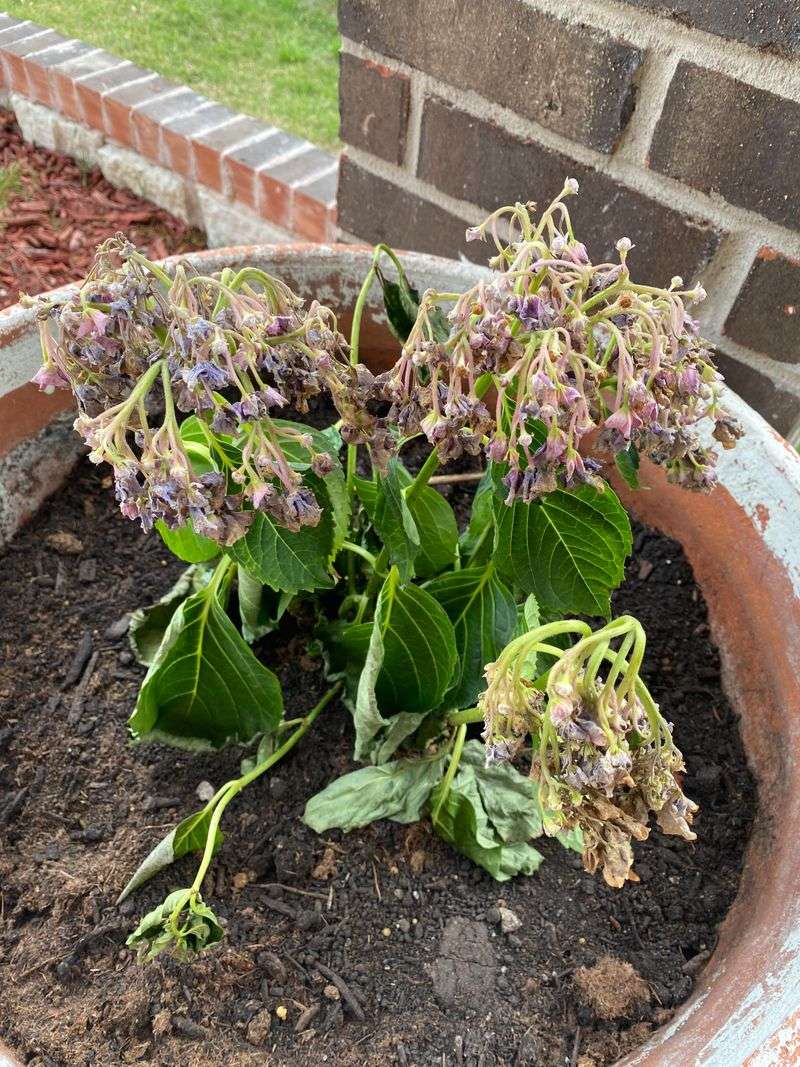As an avid gardener, I’ve learned that not every spot in your garden is ideal for every plant, especially when it comes to the charming hydrangea. Through trial and error, I’ve discovered there are key locations where these beauties simply won’t thrive. Let me take you through 16 specific places that are best avoided for planting your hydrangeas, ensuring you get the most vibrant blooms possible. Each location presents its own unique challenges, from environmental stressors to soil conditions. Let’s explore these unsuitable spots, so your hydrangeas can flourish in the perfect environment.
1. Full Sun, Hot Spots (Especially In Warmer Climates)
Hydrangeas might love a little sun, but too much of it—especially during hot summer afternoons—can stress them out. In full sun, their leaves scorch, flowers wilt, and they lose their signature lush look. The heat pulls moisture from the plant faster than it can absorb it.
Hydrangeas thrive best in morning sun with afternoon shade to cool down. Skip those sizzling spots if you want blooms that last!
They’re more delicate than they look and can’t handle the intensity of all-day rays. Overexposure to heat zaps their energy and stunts their growth. Even frequent watering won’t fix the damage once it’s done.
A bit of shade gives them the breather they need. Choose a cozy, cooler corner to keep them thriving.
2. Areas With Poor Drainage Or Standing Water
Hydrangeas love moisture, but they hate soggy feet. If you plant them in areas where water pools or soil doesn’t drain well, their roots can rot—fast.
That leads to wilting, yellowing, and eventual plant collapse. Good drainage is key to keeping hydrangeas happy and healthy. Think of them as goldilocks: not too dry, not too wet—just right.
Even with a daily watering routine, a waterlogged base can silently kill your hydrangea. These plants need oxygen at the root level, and swampy soil just won’t cut it.
Avoid low points in your yard that stay mushy after rain. Raised beds or well-aerated spots work much better. Healthy roots equal stunning blooms.
3. Close To Black Walnut Trees (They Release Juglone, Which Can Harm Hydrangeas)
Planting hydrangeas near black walnut trees is a silent killer move. These trees release a toxin called juglone, which seeps into the soil and poisons many other plants—hydrangeas included.
You might not see the effects right away, but over time, leaves will curl, flowers will fail, and the plant will wither. It’s a chemical war zone underground. Don’t let your hydrangeas get caught in the crossfire.
Even fallen leaves and roots from black walnuts can spread juglone. It sticks around in the soil long after the tree is gone. Sensitive plants like hydrangeas just can’t win near these tough competitors.
Keep a safe distance and plant them elsewhere for a better shot at survival. Some plants are juglone-tolerant—but hydrangeas aren’t on that list.
4. Shallow, Rocky Soil Without Amendment
Hydrangeas have deep, thirsty roots—and shallow, rocky soil just won’t cut it. Without nutrient-rich, loosened earth, their roots can’t stretch or feed properly. You’ll get weak stems, smaller blooms, and a plant that’s always struggling.
They’re garden divas who want a soft, rich bed, not gravel and grit. You can’t expect a lush bloom from a poor foundation.
If you have rocky ground, don’t panic—just amend it! Mix in compost, topsoil, and organic matter to make it more hydrangea-friendly. Loose, well-draining, fertile soil is their happy place. The better the soil, the more vibrant and long-lasting your blooms. Treat their roots right, and the rest will follow.
5. Windy, Exposed Locations
Hydrangeas have big, bold blooms that act like sails in strong wind. In exposed spots, wind can snap their stems, dry out their leaves, and leave them looking battered.
They thrive in calm, sheltered spaces where they can grow undisturbed. One big gust, and you could lose an entire bloom cluster. No one wants floppy, wind-burned flowers.
If your yard gets gusty, plant them where a fence, wall, or hedge can block the breeze. Even partial shelter makes a huge difference in keeping those blooms upright.
Hydrangeas aren’t delicate, but they aren’t built for windstorms either. Protect them, and you’ll see stronger growth and fuller flowers. Calm corners are their comfort zone.
6. Near Salt-Treated Roads Or Driveways
Salt from roads and driveways may melt ice, but it can wreak havoc on your plants. When hydrangeas absorb salt from soil or runoff, it dries out their roots and burns their foliage.
The damage often shows up in browning edges, wilting, and stunted growth. It’s like trying to hydrate with salty water—it just doesn’t work. Avoid salty splash zones if you want thriving blooms.
Even the salt in winter snow piles can leach into the soil and linger. Hydrangeas are sensitive and struggle to recover once affected. If you must plant nearby, add barriers or rinse the area frequently to flush the salt out. But really, it’s best to keep your hydrangeas far from the salting zone altogether. Your flowers will thank you.
7. Against South-Facing Walls With Intense Reflected Heat
South-facing walls absorb and reflect a ton of heat, turning nearby spaces into hotboxes. Hydrangeas planted there can overheat, dry out, and wilt—even with regular watering.
The extra warmth might seem helpful, but it’s actually too much for their sensitive leaves. It creates stress and scorches your plant from both above and below. Not exactly a cozy spot for a moisture-loving flower.
Instead, aim for eastern or northern exposures with gentler sunlight. If a wall is your only option, add shade or mulch to cool things down. You can also place taller plants nearby to break up the intensity.
The goal is to protect those gorgeous blooms from sunburn. Let them shine in comfort—not under pressure.
8. Low-Lying Frost Pockets
Cold air sinks, and if your hydrangea is planted in a low spot, it’s at risk of late spring frost. One unexpected freeze can damage buds, ruin blooms, or kill young plants.
These frost pockets are sneaky, especially in uneven yards or valleys. Hydrangeas prefer spots that warm up gently and stay protected. Don’t let a dip in your yard become a flower graveyard.
Plant them on higher ground or near structures that hold warmth. Mulch around the base to insulate roots during cold snaps. If you know your yard’s frost patterns, avoid the chill zones. Hydrangeas don’t mind a little cold—but not a full frost blast. Elevation equals preservation.
9. Slopes Prone To Erosion
Slopes may look pretty, but they can be a disaster for hydrangeas. Rainwater rushes down, washing away soil and nutrients before roots can soak them up.
That leaves plants weak, unstable, and constantly thirsty. Their roots need a firm, steady home—not one that shifts with every storm. Without stable ground, you won’t get stable blooms.
If you must plant on a slope, create terraces or level platforms. Add erosion control like ground cover or mulch to anchor the soil. Better yet, save the slopes for tough groundcover and give hydrangeas a flatter space. They’ll reward you with better blooms and less stress. Let them root in peace.
10. Dense Shade Under Thick Tree Canopies
Too much shade means no show. Hydrangeas need at least a few hours of sunlight to bloom well—dense tree cover blocks that essential light.
Without it, they’ll grow leggy, bloom less, and look sad and spindly. Trees also compete for nutrients and water, leaving hydrangeas struggling. It’s not the peaceful woodland paradise you think it is.
Filtered light is fine, but deep, full shade is a no-go. Move them to a brighter location with partial sun for happier plants. Early morning light is perfect for most types. Remember, no sun = no flowers. Give them light, and they’ll light up your garden.
11. Right Next To Air Conditioning Units Or Vents
Planting hydrangeas next to AC units or vents might seem like a space-saver, but it’s a bad idea. The constant blast of hot or cold air dries out the soil and stresses the plant.
It also creates inconsistent temperatures that confuse your hydrangea’s growth cycle. Leaves may brown, wilt, or drop early—no matter how often you water. This isn’t the gentle breeze they’re looking for.
In addition to airflow issues, maintenance crews could accidentally damage them during service. Hydrangeas need a peaceful, undisturbed place to thrive—not a drafty, noisy corner.
Keep at least a few feet of space between them and any vent. Let them grow without mechanical interference. Your blooms will be fuller and healthier away from all that forced air.
12. Tight Spaces Without Airflow (Can Lead To Mildew)
Hydrangeas love moisture—but not when it’s trapped around them. Tight, crowded spots with poor airflow create the perfect environment for mildew and fungal diseases.
Leaves get damp, air can’t circulate, and suddenly your beautiful bush is covered in powdery white patches. It’s a silent killer that sneaks up fast. And once mildew sets in, it’s tough to get rid of.
Give hydrangeas room to breathe. Proper spacing and pruning help air move freely through the branches. They thrive best in open areas where moisture can evaporate naturally.
Think of airflow as just as important as sun and water. Happy air = happy hydrangeas.
13. Soil With Extreme pH Levels (Very Acidic Or Alkaline)
Hydrangeas are picky about their soil’s pH level. While they’re famous for changing color based on acidity, extreme pH (either too low or too high) can mess with nutrient uptake.
You’ll end up with yellowing leaves, stunted growth, and disappointing blooms. Their roots can’t absorb what they need when the balance is off. Pretty flowers need pretty balanced soil.
Before planting, test your soil’s pH—aim for the sweet spot around 5.5 to 6.5. If it’s way off, amend with lime (to raise pH) or sulfur (to lower it). Hydrangeas are flexible but not invincible. With a little adjustment, they’ll thrive and show off those color-changing skills. It’s all about that balance.
14. Invasive Root Zones Of Aggressive Trees Like Maples
Planting hydrangeas near aggressive trees like maples is a fight for survival. These trees have sprawling, thirsty roots that suck up all the nutrients and moisture. Hydrangeas left nearby get the short end of the stick—literally. They’ll wilt, underperform, and eventually give up. It’s like growing in the shadow of a giant who eats all your food.
To keep hydrangeas happy, give them their own space away from root bullies. Raised beds or large containers can help if tree roots are unavoidable.
They need room to stretch and access to rich, undisturbed soil. Don’t let those aggressive trees steal the spotlight. Hydrangeas deserve center stage too.
15. High-Traffic Areas Where Stems Can Be Broken
Hydrangeas might look like shrubs, but their blooms are delicate and their stems can snap easily. Planting them along busy paths, play areas, or near doorways puts them at constant risk.
One bump, kick, or careless brush can break a stem and ruin a bloom. They’re best admired, not trampled. Beauty this bold needs a little protection.
Keep them in quieter garden zones, or behind a small border to prevent accidental damage. Even wind from frequent foot traffic can cause stress. Hydrangeas grow best when left undisturbed. Give them room to flourish away from the chaos. Think of them as garden royalty—they need their space!
16. Containers Without Proper Drainage Holes
Containers are great for hydrangeas—but only if they drain well. Without holes, water collects at the bottom, drowning the roots and causing rot.
The plant may look fine at first, but eventually, it will wilt, yellow, and die off. Hydrangeas love moisture, but only when it can drain freely. No one likes wet socks—especially your plants.
Always choose pots with drainage holes and use well-aerated soil. Add a layer of gravel at the bottom for extra protection. Even in containers, good drainage is the golden rule. With the right pot, hydrangeas can thrive on porches, patios, or balconies. Just let the water out—and the flowers in.

